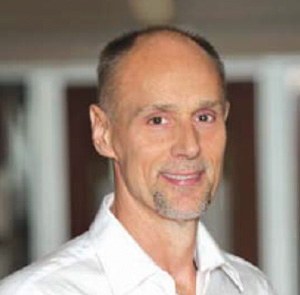Research will examine causes of atrial fibrillation and support Inuit youth mental health
TORONTO, April 21, 2022 – Two York University research teams will receive more than $2.5 million from the Canadian Institutes of Health Research (CIHR) for research on atrial fibrillation and virtual tools to support Inuit youth resilience.
Associate Professor Yvonne Bohr will receive $1,797,752 over four years, while Professor and Canada Research Chair Peter Backx of the Faculty of Science will receive $749,700 over five years. CIHR’s Project Grant Program is designed to fund ideas with the greatest potential to advance health-related fundamental or applied knowledge, health research, health care, health systems, and/or health outcomes.
“York’s researchers are at the forefront of cutting-edge research that will have a transformative impact on the health and well-being of society,” says Amir Asif, vice-president research & innovation. “The funding announced by CIHR will advance research and promote inclusive and innovative solutions to address health care challenges.”

Community members at Mittimatalik (Pond Inlet). Photo by Yvonne Bohr
The community-directed project, Inuit Youth Develop a Virtual Qaqqiq: Using Technology and Cultural Knowledge to Support Resilience Outside the (Digital) Box, is led by Bohr and Faculty of Health Associate Professor Nicole Muir in collaboration with Assistant Professor Matthew Keough and Assistant Professor Skye Fitzpatrick, all in the Department of Psychology, supported by an international team of researchers. The research is in partnership with collaborators and knowledge users Chelsea Singoorie and The Isaksimagit Inuusirmi Katujjiqatigiit Embrace Life Council, the communities of Mittimatalik (formerly Pond Inlet), Iqaluktuuttiaq (formerly Cambridge Bay), Pangnirtung, Ikpiarjuk (formerly Arctic Bay) and others. The project is housed at the LaMarsh Centre for Child and Youth Research at York’s Keele Campus.

Community at Mittimatalik (Pond Inlet). Photo by Professor Yvonne Bohr
The project aims to provide a culturally safe context for the development of new virtual mental health resources for remote Nunavut communities. Inuit youth in Nunavut continue to experience fallout from colonialism, suffering from disproportionate mental health challenges and some of the highest suicide rates in the world. Youth, in consultation with community Elders, will design mental-health-promoting digital activities, such e-games and immersive virtual reality based on a traditional Inuit philosophy and model (Inuit Qaujimajatuqangit and Qaggiq), and grounded in science.
The resulting interventions will then be delivered in the context of a virtual space that simulates Qaggiqs or “meeting places” – large igloos that have traditionally served as sites of community renewal and celebration.
“Led by the communities, we will develop and assess a wellness program that acknowledges the colonial roots of youth’s existing struggles, while promoting novel resilience-building strategies that are grounded in science,” says Bohr. “This project focuses on cultural identity, and develops tools for reducing anxiety, boredom, depression, and hopelessness, all considerations in the development of suicidality in Inuit Youth.”

Peter Backx
Backx’s project, Understanding the Causes of Atrial Fibrillation, will explore how atrial stretch is involved in promoting atrial fibrillation, the most common cardiac arrhythmia, affecting one to two per cent of the population.
“Atrial fibrillation creates a huge socio-economic burden as it increases the risk of stroke and heart failure, but the causes are still unclear and complex,” says Backx. “Most incidences are linked to aging and poor cardiovascular health, including obesity, metabolic syndrome and heart failure, but not all. But exercise can both reduce the risk of atrial fibrillation and, in the case of endurance athletes, increase the risk substantially. A common feature of all conditions leading to atrial fibrillation is high blood pressure in veins, called venous filling pressure which causes atria to stretch."
Regardless of cause, the atria of these patients show fibrosis, hypertrophy and inflammation, which Backx and his team have linked to the critical inflammatory factor referred to as TNF. Because the activation of TNF is driven by stretch, the team will examine the mechanisms whereby stretch activates TNF and the effect of TNF inhibitors.
-30-
York University is a modern, multi-campus, urban university located in Toronto, Ontario. Backed by a diverse group of students, faculty, staff, alumni and partners, we bring a uniquely global perspective to help solve societal challenges, drive positive change and prepare our students for success. York's fully bilingual Glendon Campus is home to Southern Ontario's Centre of Excellence for French Language and Bilingual Postsecondary Education. York’s campuses in Costa Rica and India offer students exceptional transnational learning opportunities and innovative programs. Together, we can make things right for our communities, our planet, and our future.
Media Contact:
Sandra McLean, York University Media Relations, 416-272-6317, sandramc@yorku.ca

